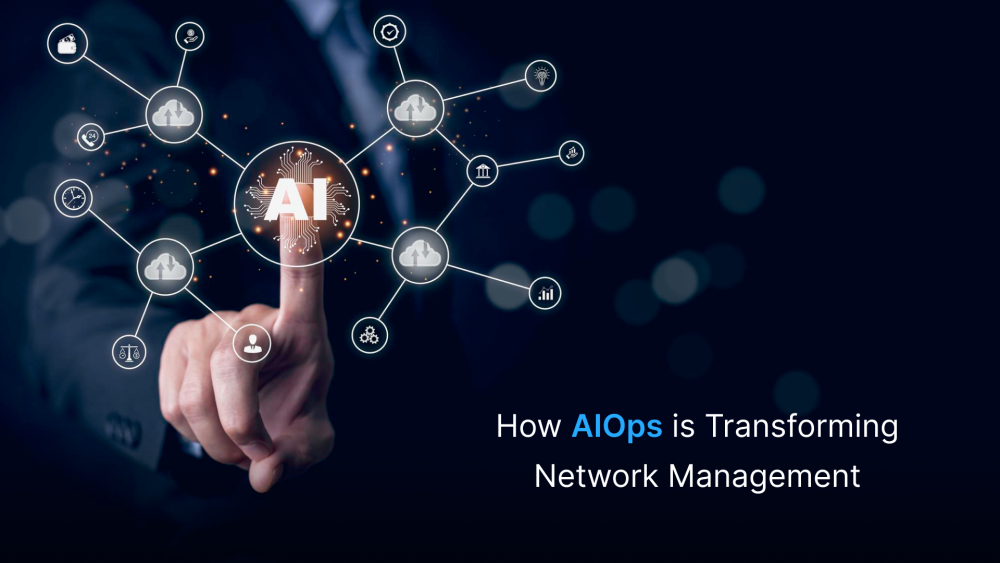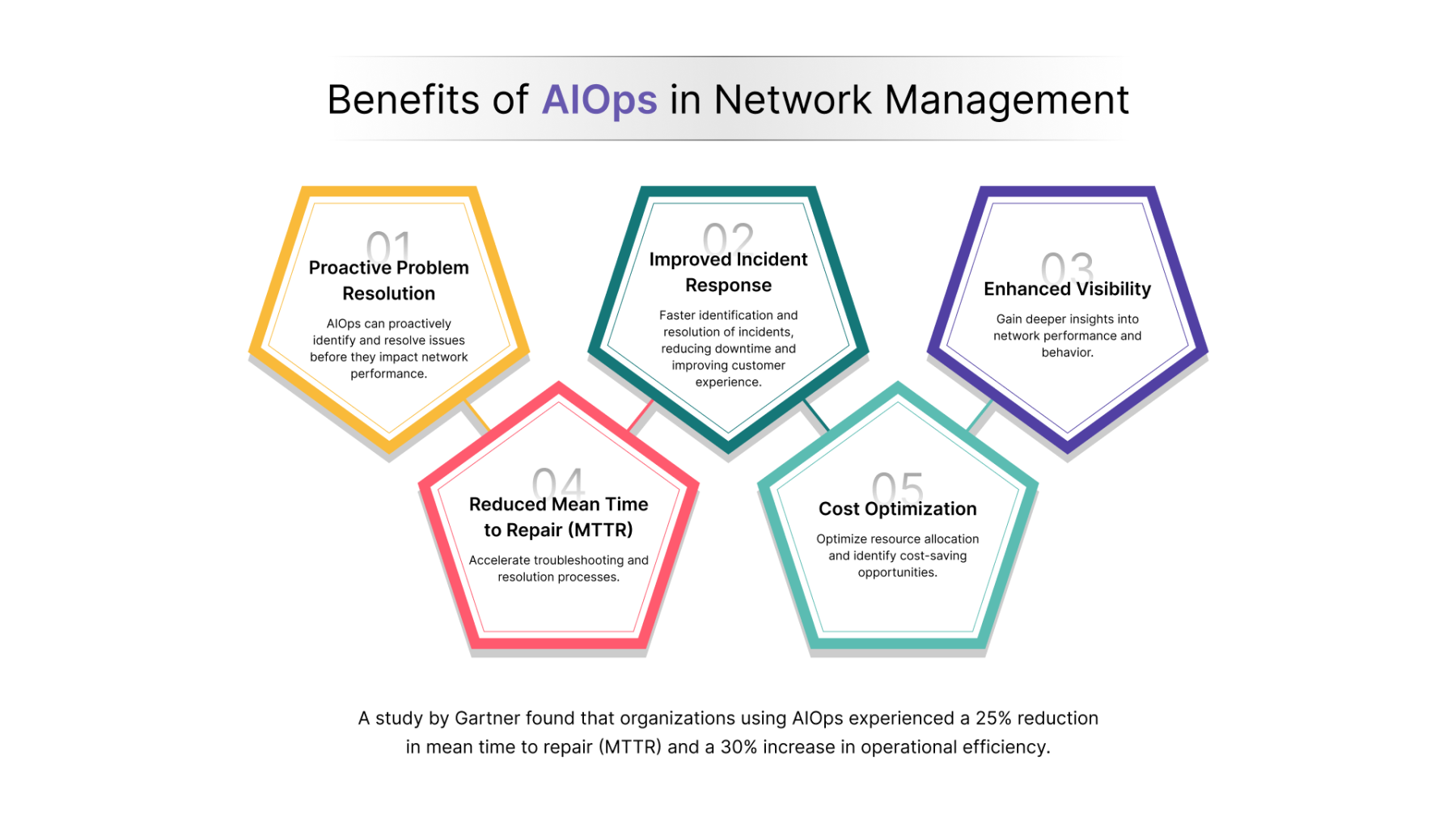The complexity of modern networks, coupled with the increasing volume and velocity of data, has created a significant challenge for IT teams. Traditional network management tools often struggle to keep up with the demands of today's digital landscape. This is where AIOps (Artificial Intelligence for IT Operations) comes into play, revolutionizing the way networks are managed and monitored.
Understanding AIOps
AIOps leverages artificial intelligence and machine learning to automate IT operations tasks, improve incident response, and gain valuable insights from network data. By combining traditional IT operations tools with AI-powered analytics, AIOps provides a more proactive and intelligent approach to network management.
Key components of AIOps:
-
Data Ingestion: Collecting data from various network sources, including devices, logs, and performance metrics.
-
Data Analytics: Applying AI and machine learning algorithms to analyze data and identify patterns, anomalies, and trends.
-
Automation: Automating routine tasks and workflows to improve efficiency and reduce human error.
-
Intelligent Alerting: Generating actionable alerts based on data-driven insights.
Benefits of AIOps in Network Management
-
Proactive Problem Resolution: AIOps can proactively identify and resolve issues before they impact network performance.
-
Improved Incident Response: Faster identification and resolution of incidents, reducing downtime and improving customer experience.
-
Enhanced Visibility: Gain deeper insights into network performance and behavior.
-
Reduced Mean Time to Repair (MTTR): Accelerate troubleshooting and resolution processes.
-
Cost Optimization: Optimize resource allocation and identify cost-saving opportunities.
A study by Gartner found that organizations using AIOps experienced a 25% reduction in mean time to repair (MTTR) and a 30% increase in operational efficiency.
Use Cases for AIOps in Network Management
-
Anomaly Detection: Identify unusual network behavior, such as traffic spikes, security breaches, or performance degradation.
-
Root Cause Analysis: Automatically determine the root cause of network issues, reducing troubleshooting time.
-
Capacity Planning: Predict future network requirements and optimize resource allocation.
-
Performance Optimization: Identify performance bottlenecks and optimize network configurations.
-
Security Monitoring: Detect and respond to security threats in real-time.
Integrating AIOps into Your Network Management Infrastructure
Integrating AIOps into your existing network management infrastructure involves several key steps:
-
Data Collection: Gather data from network devices, applications, and logs.
-
Data Ingestion: Ingest data into an AIOps platform for analysis.
-
Data Preparation: Clean, normalize, and enrich the data to improve its quality.
-
Model Training: Train machine learning models to identify patterns and anomalies in the data.
-
Alerting and Automation: Configure alerts and automate response actions based on predefined rules.
Latest Tools and Technologies
The AIOps landscape is constantly evolving, with new tools and technologies emerging:
-
AIOps Platforms: Platforms like Dynatrace, Moogsoft, and ScienceLogic offer comprehensive AIOps capabilities.
-
Machine Learning Frameworks: TensorFlow, PyTorch, and scikit-learn for building and training machine learning models.
-
Data Lakes and Data Warehouses: Storing and managing large volumes of network data.
-
Integration Platforms: Connecting AIOps tools with existing network management systems.
Challenges and Considerations
-
Data Quality: Ensuring data accuracy and completeness is crucial for effective AIOps.
-
Model Training: Developing and training machine learning models can be time-consuming.
-
Integration Complexity: Integrating AIOps tools with existing network infrastructure can be challenging.
-
Change Management: Implementing AIOps requires organizational change management to ensure adoption and success.
Conclusion
AIOps is transforming network management by automating tasks, improving incident response, and providing valuable insights. By leveraging the power of AI and machine learning, organizations can enhance network performance, reduce costs, and improve overall operational efficiency. As the complexity of networks continues to grow, AIOps will play an increasingly vital role in ensuring the reliability and performance of IT infrastructure.



